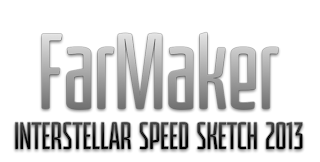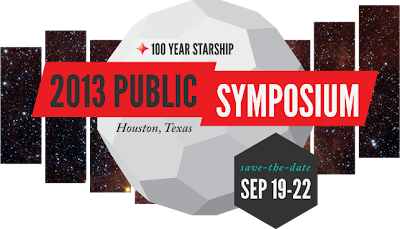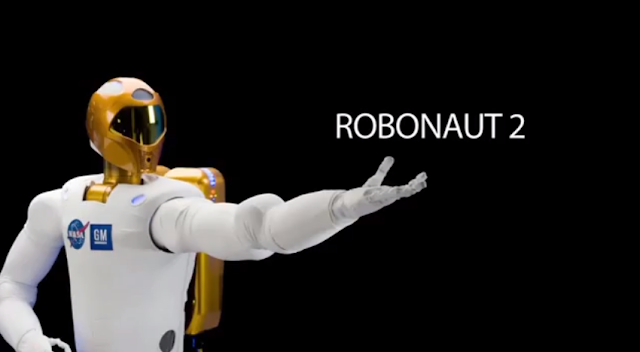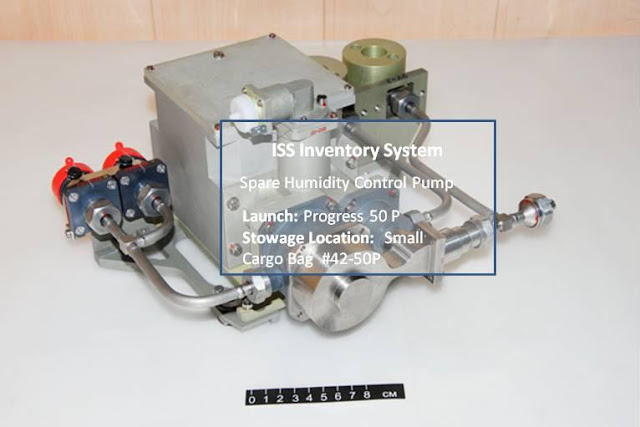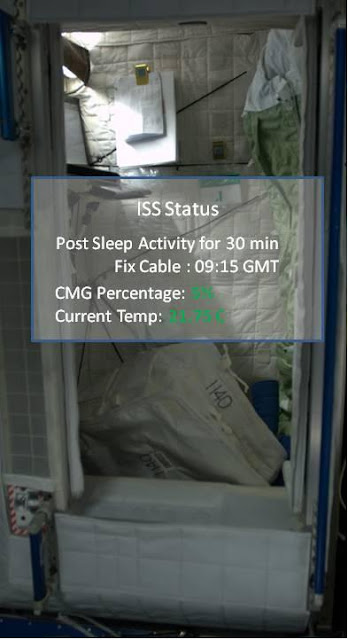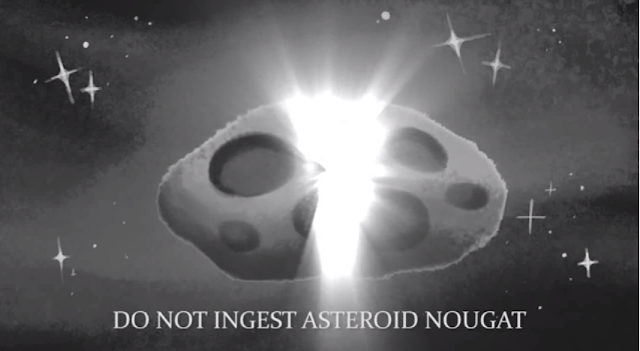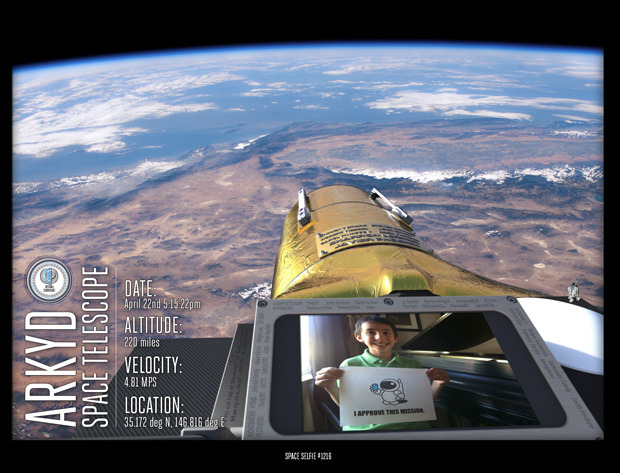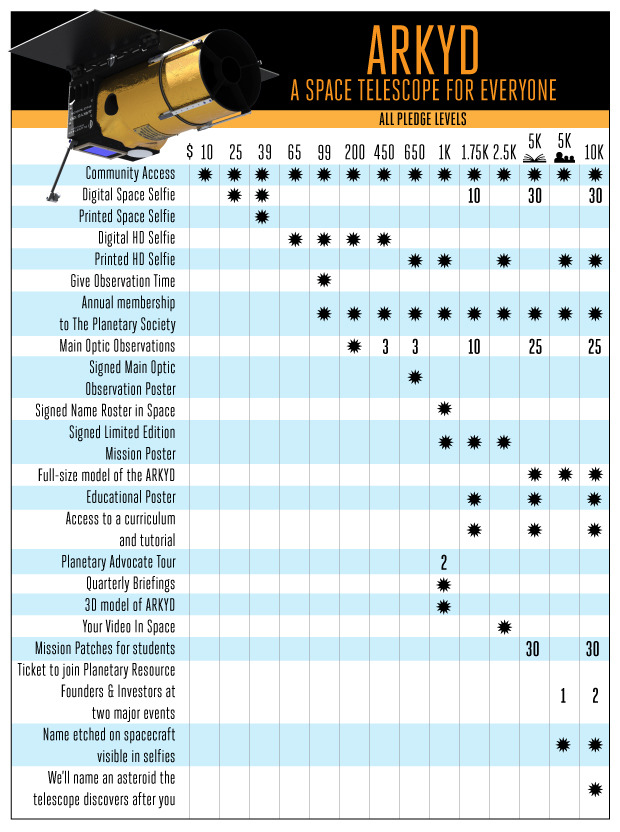http://www.reddit.com/r/IAmA/comments/1h47je/we_are_engineers_from_planetary_resources_we_quit/
Monthly Archives: June 2013
Secrets on Off-Earth Settlements
Even early stage pioneer settlements on Mars, the Outer Solar System, or on multi-generational interstellar voyages will have police, detectives, judges, and so on. Their activities should be as transparent as possible – as well as the activities of all settlers. Now that humans are unable to keep secrets from certain technologies, it may be important that these technologies and their revelations be known and open to analysis by us all: a Democratic Panopticon.
“Autonomous robotic weapons would concentrate too much power in too few hands. And that would be corrosive to representative government. Let’s make sure, for democracies at least, killer robots remain fiction.”
FarMaker Interstellar Speed Sketch 2013
This year’s theme: Project Daedalus
In honor of Martiniere’s featured cover artwork for January 2013’s exploration-dedicated issue of National Geographic, envisioning the Daedalus interstellar spacecraft, the theme for this year’s FarMaker Speed Sketch contest is “Project Daedalus”.
For further inspiration and reference sources, see Gallery of Daedalus & Icarus and Daedalus is the First and only ‘Starship design’ in History.
Also, be sure and check out Stephan Martiniere’s January 2013 “Explore” illustrations for National Geographic. Winners of the contest, which will be judged by illustrator and concept artist Stephan Martiniere, a guest of honor and keynote speaker at Starship Congress, will be included in an upcoming book on Project Daedalus. Entrants may spend between 5 minutes and 1.5 hours sketching concept art on the following themes:
Building: Interstellar tech helps a city thrive on Earth, keeping shipyards busy. What is it like?
NASA Robonaut Challenge – Open Robotics and Algorithmics Competitions
“R2 is meant to contribute back to the ISS by freeing the astronauts up to do more scientific research and the more difficult tasks,” Allison Thackston of the Robonaut team tells Mashable via email. “We measure our cost savings in crew hours saved, which translates into more important scientific and engineering research being done.”
“Eventually, the goal is to get R2 to take on even more of the mundane tasks currently undertaken by astronauts, freeing up the astronauts to spend more time with hands-on experimentation. The robot is slated to get an additional set of arms, which the team calls “legs.” They should allow R2 to take care of simple cleaning tasks, among other routine responsibilities.”
Hello ladies! The only thing we like more than SpaceX are the women at SpaceX…yes please…!
Joe Mascaro “Risky Business”
“So let me get this straight, NASA. You’re telling me that the greatest adventure in the history of the human species — the most awesome voyage ever embarked upon by humankind — you’re saying that that’s dangerous?
Well gosh, NASA, isn’t that what we signed up for?
NASA says that the radiation levels on a single 500-day trip to Mars exceed their lifetime limits for astronauts. All told, the trip would entail about a 3-percentage-point increase in terminal cancer risk.
Here’s another safety tip: If you set sail from Europe under Magellan, Cartier or Jones, your odds of dying of scurvy were probably no better than a coin flip.
Here’s another: If you picked up the flag of the United States of America and carried it into battle in 1941, you had a 1 in 50 chance of not ever having children. Of not ever growing old.
But it gets worse: If you stepped onboard a Space Shuttle in the 1980s, your odds of losing consciousness in a massive inferno of solid rocket fuel and jagged metal, and then crashing into the Atlantic Ocean were about 1 in 24. If you were a school teacher, your odds of death were 100 percent.”
Michael Interbartolo “#IfIHadGlass from an Unofficial NASA Perspective”
“Michael Interbartolo is a rocket scientist by day at NASA’s Johnson Space Center and scifi and technology geek by night. As a long time movie fan and tech geek I am always keeping an eye on the internet for the latest news on what is coming out. I look forward to seeing what Glass can do for NASA but also all the cool stuff for life with my wife and kids.”
Against Me! “Holy Shit!”
I am oh so fascinated,
I am oh so entertained,
standing here like a comedian,
I repeat what I said, again and again and again
until the meaning has become an imitation of itself,
an impression of an original defeats the fucking purpose.
I don’t know where this is going,
but it’s looking more and more like the same place where we started.
Oh good God, holy shit, the joke’s on us, not on them.
Kids pretending to be astronauts, police officers, and firemen.
Oh good God, holy shit, the joke’s on us, not on them.
Kids pretending to be astronauts, police officers, and firemen.
And everybody’s watching the lead singer in the bands.
The guitars explode into a drumbeat that’s driving.
It’s pretty fucking boring, ah don’t you think?
And of all the things we’d ask,
of all the ways we’d like for it to be,
they’re just drunken conversations,
song lyrics sung at the top of our lungs so desperately.
I believe in a power that is of and by the people.
I believe in an art that cannot be compromised.
I believe that I will endure, and I will overcome.
And I will sing it until I no longer remember the reason.
Oh good God, holy shit, the joke’s on us, not on them.
Kids pretending to be astronauts, police officers, and firemen.
Oh good God, holy shit, the joke’s on us, not on them.
Kids pretending to be astronauts, police officers, and firemen.








